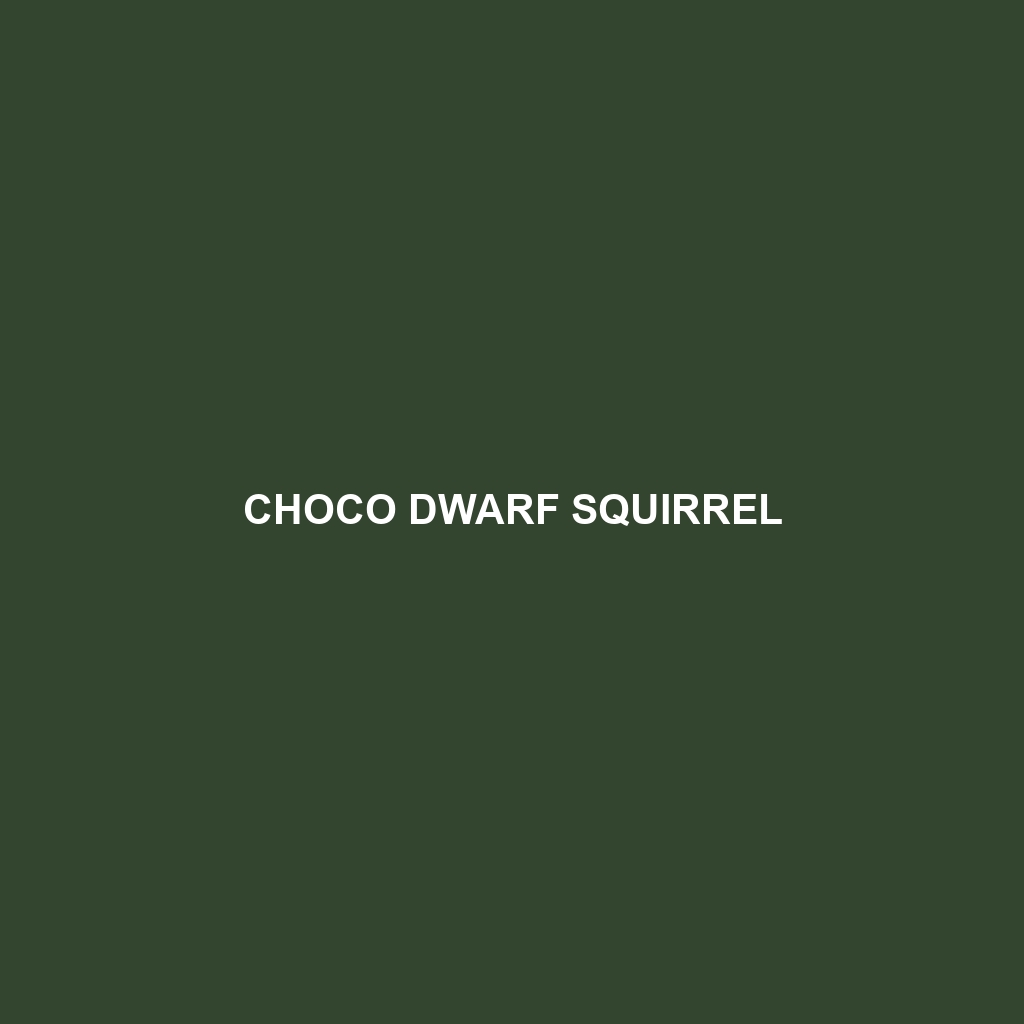Choco Dwarf Squirrel
Common Name: Choco Dwarf Squirrel
Scientific Name: Microsciurus isthmius
Habitat
The Choco Dwarf Squirrel is primarily found in the lush tropical rainforests of Central and South America, particularly in the Chocó region of Colombia and western Ecuador. This small-sized rodent thrives in dense forest canopies and prefers areas with abundant vegetation and moisture, making it well-suited for life in humid environments. It typically inhabits lowland rainforests and is often associated with primary and secondary growth forests.
Physical Characteristics
The Choco Dwarf Squirrel is one of the smallest squirrel species, measuring approximately 15 to 20 centimeters in length, not including its bushy tail which adds another 10 to 14 centimeters. Its fur is soft and dense, displaying a striking combination of brown and gray shades, with lighter tones on the underside. Distinctive features include its large, expressive eyes, small rounded ears, and a relatively short snout. The tail is bushy and may aid in balancing as it navigates through its arboreal habitat.
Behavior
Choco Dwarf Squirrels are predominantly diurnal, meaning they are active during the day. These playful creatures are known for their agility and speed, often seen leaping from branch to branch in their rainforest homes. They communicate through a series of vocalizations and markings, establishing territories and alerting others to potential threats. Additionally, they are excellent climbers, using their sharp claws to grip onto tree bark.
Diet
The diet of the Choco Dwarf Squirrel largely consists of fruits, seeds, and nuts, which are readily available in its tropical forest habitat. They also consume flowers and foliage, showcasing their role as seed dispersers within their ecosystem. Their feeding habits not only benefit their own survival but also contribute to forest regeneration and biodiversity.
Reproduction
Breeding seasons for the Choco Dwarf Squirrel typically occur during the rainy months, from May to September. Female squirrels give birth to litters of 2 to 4 offspring after a gestation period of around 45 days. The young are altricial at birth, meaning they are born hairless and blind, relying on maternal care for survival. Weaning occurs around 6 weeks, after which juveniles begin to explore their surroundings under the watchful eye of their mother.
Conservation Status
The Choco Dwarf Squirrel is currently listed as “Vulnerable” by the IUCN Red List due to habitat loss resulting from deforestation and human encroachment. Efforts are underway to protect its rainforest habitat and promote sustainable land-use practices to ensure the continued existence of this unique species.
Interesting Facts
– The Choco Dwarf Squirrel is known for its remarkable ability to adapt to varying levels of canopy density.
– Despite its small size, it possesses a high-energy lifestyle, requiring a vast quantity of food to sustain its metabolism.
– It is often confused with other small squirrel species in the region, but its distinctive coloration and habitat preference help differentiate it.
Role in Ecosystem
As an important member of the forest ecosystem, the Choco Dwarf Squirrel plays a crucial role in seed dispersal, which promotes plant diversity and health within its habitat. By feeding on fruits and nuts, they facilitate the growth of various tree species, contributing to the overall health of the tropical rainforest and supporting numerous other wildlife species.
This structured description provides in-depth information about the Choco Dwarf Squirrel, incorporating relevant keywords and SEO techniques for improved visibility.
